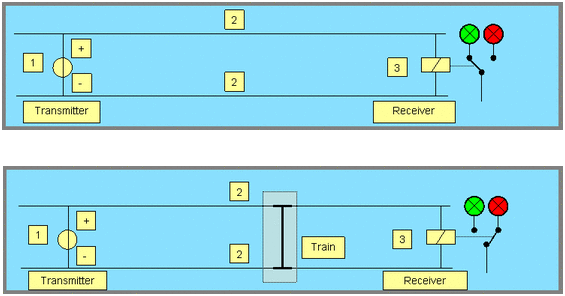Railway System Integration
The separation of railways has led to a structure of the railway sector in which responsibilities for the safe and reliable operation of the complete railway system depend highly on the co-operation between the different players. No single party carries the responsibility for the integrated system.
WALENBERG Rail Assessment has already in the past pointed out in several studies that special arrangements were needed to come to a safe and reliable functioning of the integrated railway system. Under the Railway Safety Directive and in particular in the way in which the Common Safety Methods have been specified, this problem has been solved. The Common Safety Methods bridge the gap between the Railway Interoperability Directive and the Railway Safety Directive.
Common Safety MethodsApplication of the CSM on Risk Assessment forms the basis for the system integration.
Assessments required by the CSM and focused on the safe and reliable integration of the railway will help to maintain the high level of safety and reliability of the railways. WALENBERG Rail Assessment provides you with the support and services you need for the safe and reliable integration of your products and subsystems, within the impartiality conditions of the CSM_REA |
ETCS as a System Integration example
Read more:
Tackling the Challenges to standard train control
Railway Gazette International, March 2009
Making progress towards standardised train control
Railway Gazette International, March 2012
Belgian Master Plan targets 2022
Railway Gazette International , April 2014
Visit Railway Gazette
Tackling the Challenges to standard train control
Railway Gazette International, March 2009
Making progress towards standardised train control
Railway Gazette International, March 2012
Belgian Master Plan targets 2022
Railway Gazette International , April 2014
Visit Railway Gazette
System Integration Example: EMC

One of the most discussed examples of a system integration problem is EMC. The energy system, the rolling stock electrical installation (traction and auxilliary power converters), the signalling system (train detection, communication systems) and the traction return current circuits are all closely interacting as one system. Problems that may occur relate to harmonic interference and loss of shunt.
Loss of shunt
Loss of shunt is a potentially dangerous situation, when the short circuit capability of the railway vehicle on the track is insufficient. This may have many different causes, both on the track side and on the vehicle side. Whatever the cause is, a solution could be to look at the interaction of the track circuit and the rolling stock as one system. This leads to an interesting new perspective: adding active control elements in the train could improve the total system behaviour, irrespective of the cause of the loss of shunt problem.
Read more: ACTEL AXLE
Read more: ACTEL AXLE
EMC: conducted interference
Conducted interference is caused by power equipment in the railway system, that produces currents in the return current of a train, which may have the same or similar frequencies as the signalling equipment or other sensitive control or communication equipment in or close to the track.
EMC: Compatibility Case
Walenberg Rail Assessment can assist in building the requested Compatibility Case that is needed to demonstrate theoretical and practical compliance of the power systems (traction, auxiliary power converters) to the applicable standards, for example CLS/TS 50238. This applies to all existing AC and DC traction systems. Walenberg Rail Assessment has been working in this area for many years and is familiar with all NNTR's and European national requirements in this field of expertise.
Conducted interference is caused by power equipment in the railway system, that produces currents in the return current of a train, which may have the same or similar frequencies as the signalling equipment or other sensitive control or communication equipment in or close to the track.
EMC: Compatibility Case
Walenberg Rail Assessment can assist in building the requested Compatibility Case that is needed to demonstrate theoretical and practical compliance of the power systems (traction, auxiliary power converters) to the applicable standards, for example CLS/TS 50238. This applies to all existing AC and DC traction systems. Walenberg Rail Assessment has been working in this area for many years and is familiar with all NNTR's and European national requirements in this field of expertise.
HSL Zuid
The Dutch HSL Zuid project (HSL South or High Speed Line South) has created a high speed line from Amsterdam to the Dutch-Belgian border. Putting this line into operation has been a real challenge. This proces has been analysed in an article in De Ingenieur, to which Walenberg Rail Assessment has also contributed.
Read more: 5 jaar vertraging - Fyra geremd door gebrek aan systeemintegratie
Read more: 5 jaar vertraging - Fyra geremd door gebrek aan systeemintegratie

